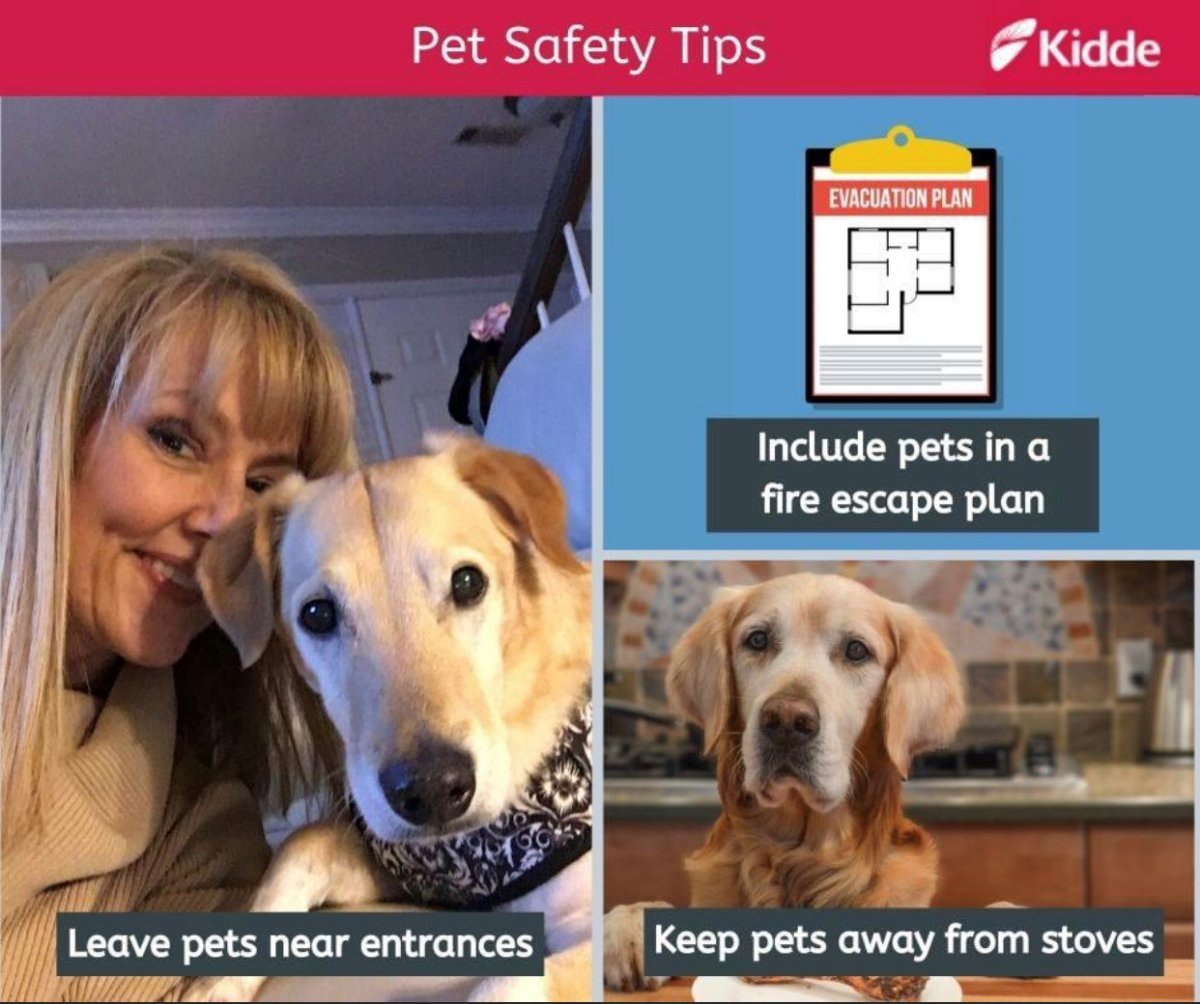As physical-distancing measures to stop the spread of the new coronavirus keep people indoors, Canadians are increasingly turning to four-legged friends for company while staying at home.

According to Humane Canada, adoption numbers across the country have increased between 20 and 60 per cent since emergency orders hit.
Organizations like Alberta Animal Rescue Crew Society and Winnipeg’s Animal Services Agency say they’re dealing with more adoptions than usual. And the Winnipeg Humane Society has had nearly 200 animals fostered since March, a jump from its average of 140 foster pets.
As more homes welcome pets, experts say it’s important to protect curious animals from common household hazards and from causing potential home fires. In the U.S., for example, 500,000 pets are injured by smoke inhalation and 40,000 die due to home fires every year, according to stats shared by Kidde Canada, a manufacturer of home safety products.
In partnership with Kidde Canada, here are three tips to help keep fostered or adopted pets safe in their new environments.
Get your home ready for new pets — especially the kitchen
New pets that are prone to chewing or are familiarizing themselves with an environment need a pet-proofed space that protects them from potential hazards.
Sharon Cooksey, Kidde Canada spokesperson, estimates that around 1,000 home fires each year are started by pets that get hold of wires or accidentally lend a paw in the kitchen.
To help prevent fires, raise or hide any loose wires that dogs can chew through, remove stove knobs so pets won’t accidentally turn on the burners and turn pot handles in when cooking.
Animals are also attracted to open flames, so remove any candles and make sure cats and dogs are supervised around fireplaces.
READ MORE: ‘Heartbroken’ pet owner warns others after dog dies suffocating on common household item
If you’re leaving your pet home alone, consider crating them near an entrance, which makes it easier for first responders to locate them in case of emergency, or using baby gates to keep them to one safe space.
In the event of an emergency situation like a fire, Cooksey says, having a decal or cling on the front window that indicates how many pets are inside is a huge help to firefighters. Many local fire departments can provide these decals to pet owners.
“It provides first responders information on how many pets may be inside the home,” she says. “Firefighters place a high priority on search and rescue to confirm everyone is outside of the structure and ensure life is preserved. Firefighters will also do their best to locate and remove any pets from the hazard.”
Work with your pet so they’re not scared of alarms
As you get to know your pet, it’s likely you’ll start to understand their behaviours and patterns, which can help to keep them safe during an emergency.
Learn a cat’s favourite hiding spots, for example, in case you need to make a quick exit or relay that information to a first responder. It’s also a good idea to train pets to come when called and to make them part of your family escape plan.
Cooksey also recommends testing smoke and carbon monoxide alarms in front of pets.
“Train your pet how to respond to the sound of an alarm,” she says. “We recommend this with children as well. Have them nearby when you test alarms to help them acclimatize.
“Test the alarm as if you are training them with commands. If you test the alarm and then run with them to the exit, over repeated practice they might become conditioned to try to leave the home instead of staying or hiding because they’re afraid of the sound.”
Get the right home safety equipment — for pets and yourself
Pets are just as susceptible to carbon monoxide poisoning as humans. This means maintaining appliances and having fireplaces professionally cleaned once a year to minimize the risk of carbon monoxide poisoning is important for everyone’s safety.
“Make sure that you reduce the risk of carbon monoxide in the home first and foremost, because carbon monoxide is a silent killer,” Cooksey says. “You can’t taste it. You can’t smell it. The best way to know there’s carbon monoxide in your home is to have a working alarm.”
Getting proper home safety equipment may be the most important thing any pet owner can do to protect their furry friends — and themselves, Cooksey adds.
Have a carbon monoxide alarm and smoke alarm on every floor of the house, test them once a week and replace any models that are older than 10 years. “The first line of defence is to have those alarms and to make sure they are working,” she says.
READ MORE: CO leak that killed 12-year-old Airdrie boy caused by poorly ventilated water heater: RCMP
For more information about fire safety at home, visit the Kidde Canada website.



